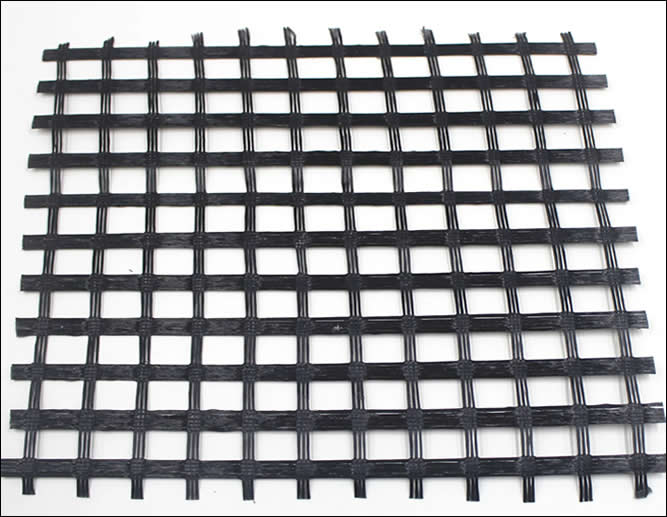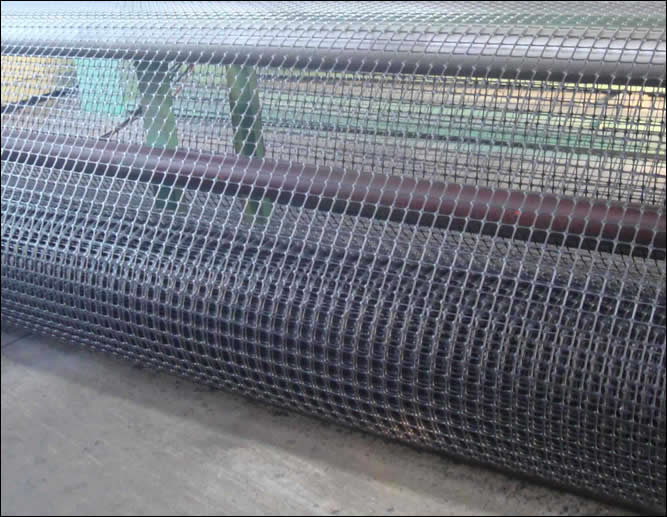Biaxial geogrids of PP or HDPE, Plasticized, Extruded into sheets, Stretched in both longitudinal and transverse directions.
Bi-axial Geogrids can be made from materials including plastic, polyester and fiber-glass by way of weaving, knitting, extruding or other method. Biaxial geogrid features equal strength in both longitudinal and transverse directions, creating an interlocking system that can effectively bear and diffuse forces throughout the soil.
Biaxial geogrids are designed to spread loads over a large area, reducing excavation needs and providing an economical design. Their ribs interlock with the surrounding soil particles, increasing bearing capacity and reducing time and cost associated with placement and construction.
Biaxial geogrids ribs thickness and unit weight
Biaxial geogrids rib thickness (1mm) , 150g/m²
Biaxial geogrids rib thickness (1.5mm) , 230g/m²
Biaxial geogrids rib thicknesses (2mm) , 300g/m²
Biaxial geogrids rib thicknesses (2.5mm), 350g/m²
(The above is the estimated value, the tolerance is 1-2g/sqm)
Application
Biaxial geogrid provides a long-term resistance to deformation and enhances the bearing capacity of road and ground foundations, extending their service life, it is used to:
1, prevent caving in or cracks in the road or ground surfaces and keeps them looking neat and tidy.
2, stop culverts from cracking.
3, improve soil slope stability and prevents soil erosion.
4, reduce the required thickness of bedding layers, saving costs.
5, support slope vegetation mesh mats to green the environment.
6. replace metal mesh for coal mine shafts.
PP biaxial geogrid within road subbase project to increase stablization:

Configuration: Biaxial
Raw Material: PP polymer
Color: Black or White
Tensile Strength at 2% Strain (MD&CD), kN/m: 12.5 (Min.)
Tensile Strength at 5% Strain (MD&CD), kN/m: 24 (Min.)
Ultimate Tensile Strength (MD&CD), kN/m: 30 (Min.)
Elongation at Ultimate Tensile Strength (MD&CD), %: 8 (Max.)
Mass per Unit Area, g/m^2: 200 (Min.)
Plastic Extruded Biaxial Geogrid

Material: Polypropylene extruded pvc
Construction: Bi-axial
Grid opening: 40x40mm, tolerance 4mm more or less
Color:Carbon black
Biaxial Geogrid Technical Data:
| Specifications | Longitudinal/transverse tensile strength/(KN/m) | Tensile strength at 2% elongation longitudinal/transverse/(KN/m) | Tensile strength at 5% elongation longitudinal/transverse/(KN/m) | Longitudinal/transverse yield elongation/% |
| GM1515 | ≥15.0 | ≥5.0 | ≥7.0 | ≤15.0/13.0 |
| GM2020 | ≥20.0 | ≥7.0 | ≥14.0 | |
| GM2525 | ≥25.0 | ≥9.0 | ≥17.0 | |
| GM3030 | ≥30.0 | ≥10.5 | ≥21.0 | |
| GM3535 | ≥35.0 | ≥12.0 | ≥24.0 | |
| GM4040 | ≥40.0 | ≥14.0 | ≥28.0 | |
| GM4545 | ≥45.0 | ≥16.0 | ≥32.0 | |
| GM5050 | ≥50.0 | ≥17.5 | ≥35.0 |
Installation
Installation of the geogrid is convenient and time-saving, reducing construction time and subsequent maintenance costs.
When installing biaxial geogrids, the site should be properly prepped and leveled, and the biaxial geogrid should be installed according to specific instructions.
In general, biaxial geogrids have a lifespan of 20 years when properly used. Exposure to ultraviolet (UV) radiation and extreme temperatures can cause the material to degrade over time.
Biaxial Geogrids or Uniaxial Geogrids: How to choose the right products
Biaxial geogrids and uniaxial geogrids differ in construction and properties:
a.Biaxial Geogrids: The products have equal strength in both the longitudinal and transverse directions, offeringisotropic reinforcement, suitable for applications that require load distribution in multiple directions. Biaxial geogrids provide excellent resistance against lateral movement and are commonly used in slope stabilization and retaining wall construction in mining operations. They are also effective in base reinforcement for roads and other surface structures.
b. Uniaxial Geogrids: Uniaxial geogrids have higher tensile strength in one primary direction and lower strength in the perpendicular direction. They are designed for applications that demand reinforcement predominantly along one axis. Uniaxial geogrids are ideal for strengthening haul roads and providing longitudinal reinforcement in high-traffic areas within mining sites. They effectively distribute the load and reduce deformations caused by repeated heavy traffic.
